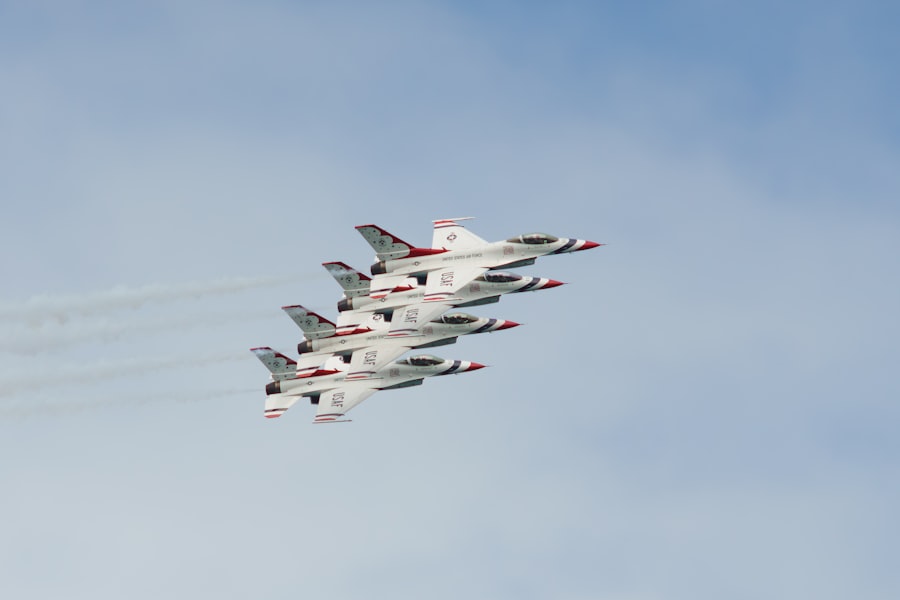Precision aerospace engineering is a specialized field that focuses on the design, development, and manufacturing of aircraft and spacecraft with an emphasis on accuracy and reliability. This discipline encompasses a wide range of activities, from the initial conceptualization of aerospace systems to the intricate details of component fabrication. The importance of precision in aerospace engineering cannot be overstated; even the slightest deviation in measurements can lead to catastrophic failures.
As the aerospace industry continues to evolve, the demand for precision engineering has become increasingly critical, driven by the need for enhanced performance, safety, and efficiency. The evolution of precision aerospace engineering has been marked by significant milestones, including the transition from traditional manufacturing techniques to advanced technologies such as computer-aided design (CAD) and additive manufacturing. These innovations have enabled engineers to create complex geometries and optimize designs for weight reduction and performance enhancement.
Furthermore, the integration of precision engineering principles has facilitated the development of more sophisticated systems that can withstand the harsh conditions of flight and space travel. As we delve deeper into this field, it becomes evident that precision aerospace engineering is not merely a technical requirement but a fundamental aspect that shapes the future of aviation and space exploration.
Key Takeaways
- Precision aerospace engineering is crucial for enhancing aircraft performance and safety.
- Innovations in materials and manufacturing improve durability and reduce weight.
- Advances in aerodynamics and propulsion systems lead to more efficient and powerful aircraft.
- Integration of AI and automation optimizes design, production, and maintenance processes.
- Precision engineering plays a vital role in advancing space exploration and future aerospace technologies.
Innovations in Materials and Manufacturing Processes
The landscape of materials used in aerospace engineering has undergone a remarkable transformation over the past few decades. Traditional materials such as aluminum and titanium have been supplemented or replaced by advanced composites and alloys that offer superior strength-to-weight ratios. For instance, carbon fiber reinforced polymers (CFRP) have gained prominence due to their lightweight properties and resistance to corrosion.
These materials not only enhance the performance of aircraft but also contribute to fuel efficiency, which is a critical factor in reducing operational costs. In addition to material innovations, manufacturing processes have also evolved significantly. The advent of additive manufacturing, commonly known as 3D printing, has revolutionized how components are produced.
This technology allows for the creation of complex geometries that were previously impossible to achieve with conventional machining methods. For example, General Electric has successfully utilized 3D printing to manufacture fuel nozzles for jet engines, resulting in parts that are lighter and more efficient than their traditionally manufactured counterparts. Moreover, additive manufacturing reduces waste and shortens production times, making it an attractive option for aerospace companies striving for efficiency and sustainability.
Advancements in Aerodynamics and Propulsion Systems

Aerodynamics plays a crucial role in the performance of aircraft and spacecraft, influencing factors such as lift, drag, and fuel efficiency. Recent advancements in computational fluid dynamics (CFD) have enabled engineers to simulate airflow over complex surfaces with unprecedented accuracy. This capability allows for the optimization of wing shapes and fuselage designs, leading to improved aerodynamic performance.
For instance, the development of blended wing body designs has demonstrated significant reductions in drag, resulting in enhanced fuel efficiency for commercial airliners. Propulsion systems have also seen significant advancements, particularly with the rise of hybrid-electric and fully electric propulsion technologies. These innovations aim to reduce greenhouse gas emissions and reliance on fossil fuels in aviation.
Companies like Boeing and Airbus are actively exploring hybrid-electric systems that combine traditional jet engines with electric motors to improve efficiency during various phases of flight. Additionally, research into sustainable aviation fuels (SAFs) is gaining momentum, with several airlines already testing these alternatives in their fleets. The integration of these advanced propulsion systems not only enhances performance but also aligns with global efforts to create a more sustainable aviation industry.
Importance of Precision Engineering in Aerospace
| Metric | Description | Impact on Aerospace | Example |
|---|---|---|---|
| Dimensional Tolerance | Allowed deviation in part dimensions | Ensures parts fit perfectly, reducing failure risk | ±0.01 mm tolerance in turbine blade manufacturing |
| Surface Finish Quality | Measure of surface smoothness | Reduces friction and wear, improving efficiency | Ra 0.2 µm finish on aerodynamic surfaces |
| Material Consistency | Uniformity in material properties | Enhances structural integrity and safety | Consistent alloy composition in fuselage panels |
| Assembly Accuracy | Precision in joining components | Prevents misalignment and mechanical failure | Micrometer-level alignment in engine assembly |
| Weight Optimization | Minimizing weight without compromising strength | Improves fuel efficiency and payload capacity | Use of lightweight composites with precise fabrication |
| Reliability Rate | Percentage of components performing without failure | Critical for mission success and safety | 99.999% reliability in avionics systems |
Precision engineering is paramount in aerospace due to the inherent risks associated with flight and space travel. The safety of passengers and crew members hinges on the reliability of every component within an aircraft or spacecraft. For example, the failure of a single bolt or connector can lead to catastrophic outcomes.
Therefore, rigorous testing and quality assurance processes are essential throughout the design and manufacturing phases. This commitment to precision ensures that every part meets stringent safety standards and performs as intended under extreme conditions. Moreover, precision engineering contributes significantly to operational efficiency.
In an industry where fuel costs represent a substantial portion of operating expenses, even minor improvements in aerodynamics or weight reduction can yield significant savings. The use of precision-engineered components allows for tighter tolerances and better fitment, which can enhance overall system performance. For instance, the integration of precision-engineered turbine blades in jet engines can lead to improved airflow dynamics, resulting in higher thrust-to-weight ratios and reduced fuel consumption.
As such, precision engineering is not only a matter of safety but also a critical factor in optimizing performance and reducing costs across the aerospace sector.
Integration of Artificial Intelligence and Automation in Aerospace Engineering
The integration of artificial intelligence (AI) and automation into aerospace engineering is transforming how designs are conceived, tested, and manufactured. AI algorithms can analyze vast amounts of data generated during flight tests or simulations, identifying patterns that may not be immediately apparent to human engineers. This capability enables more informed decision-making during the design process, leading to innovations that enhance performance and safety.
Automation is also playing a pivotal role in manufacturing processes within the aerospace industry. Robotics are increasingly being employed for tasks such as assembly, welding, and inspection. For example, Boeing has implemented automated systems for fuselage assembly that improve precision while reducing labor costs.
These automated systems can perform repetitive tasks with a level of accuracy that surpasses human capabilities, ensuring that components are assembled correctly every time. Furthermore, AI-driven predictive maintenance systems are being developed to monitor aircraft health in real-time, allowing for proactive maintenance interventions that can prevent failures before they occur.
Future Trends and Challenges in Precision Aerospace Engineering

As precision aerospace engineering continues to advance, several trends are emerging that will shape its future trajectory. One notable trend is the increasing focus on sustainability within the industry. With growing concerns about climate change and environmental impact, aerospace companies are investing heavily in research aimed at developing greener technologies.
This includes not only advancements in propulsion systems but also efforts to create more sustainable manufacturing processes that minimize waste and energy consumption. However, these advancements come with their own set of challenges. The integration of new materials and technologies often requires significant investment in research and development as well as retraining of the workforce.
Additionally, regulatory hurdles can slow down the adoption of innovative solutions within the aerospace sector. For instance, while electric propulsion systems hold great promise for reducing emissions, they must undergo rigorous testing and certification processes before they can be implemented commercially. Balancing innovation with safety regulations will be crucial as the industry navigates these challenges while striving for progress.
Impact of Precision Aerospace Engineering on Space Exploration
Precision aerospace engineering has had a profound impact on space exploration endeavors over the past few decades. The design and construction of spacecraft require an unparalleled level of accuracy due to the extreme conditions encountered beyond Earth’s atmosphere. For example, NASA’s Mars rovers are equipped with precision-engineered components that must withstand harsh temperatures and dust storms while performing complex scientific tasks on the Martian surface.
Moreover, advancements in precision engineering have enabled ambitious missions such as interplanetary travel and deep-space exploration. The development of reusable rocket technology by companies like SpaceX has revolutionized access to space by significantly reducing launch costs. Precision engineering plays a vital role in ensuring that these rockets can be reused multiple times without compromising safety or performance.
As humanity sets its sights on Mars colonization and beyond, precision aerospace engineering will be at the forefront of making these dreams a reality.
The Role of Precision Engineering in Shaping the Future of Aerospace
The role of precision engineering in shaping the future of aerospace cannot be overstated; it is integral to every aspect of aircraft and spacecraft design, manufacturing, and operation. As we look ahead, it is clear that continued advancements in materials science, manufacturing processes, aerodynamics, propulsion systems, artificial intelligence, and automation will further enhance the capabilities of aerospace engineering. The challenges posed by sustainability concerns and regulatory frameworks will require innovative solutions that prioritize both safety and environmental responsibility.
Ultimately, precision aerospace engineering will remain a cornerstone of progress within the industry as it strives to meet the demands of an ever-evolving landscape characterized by technological advancements and global challenges. The commitment to precision not only ensures safety but also drives efficiency and innovation—elements that are essential for the continued success of aviation and space exploration endeavors in the years to come.




